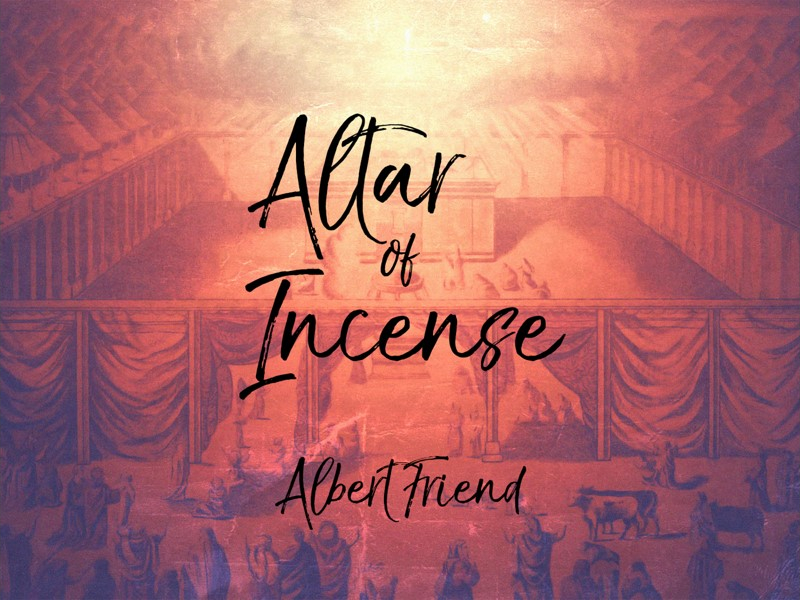When we have offered our bodies a living sacrifice unto God, and have not been conformed to the world, but have been transformed, by the renewing of our minds (Rom. 12:1-3) then all will be well. We can stand at the altar of incense (place of prayer) and are ready to enter into the presence of God.

By Albert Friend
To View the Entire Article, Click Here
To Download the Entire Article, Outline, or PowerPoint, Click Here
One of the most important pieces of furniture
We now come to one of the most important pieces of furniture in the holy place. It represents to us one of the most important things in the life of God’s children. We see the “golden altar of incense” standing before the veil. The veil was to be rent with the death of our Lord and Savior as he started back into heaven. This finished his work in the world he had made by his great power.
Before passing the veil
Here at the golden altar, which stopped before the veil that separated the holy and most holy place, the priest performed his last work before passing the veil. How important this work was. Here was his last step. In a few minutes he would be inside the most holy place in the presence of the God of Israel. How careful he must have been as he Prepared for this last step. No doubt a feeling of dread and of awe surrounded him from the time which it took him to push aside the veil and enter therein.
The golden altar is closely identified with prayer
This golden altar of incense has been closely identified with prayer by the word of God. The first mention of it in the bible is in Ex. 30:10. Here we read the instructions which Moses received regarding the building of it, and of its use. This altar was made of the same kind of wood as the brazen altar in the court and the table for the showbread. We remember that the altar in the court, the brazen altar of sacrifice was overlaid with brass, but this one in the holy place was, as the table for the showbread, overlaid with gold.
Although these two altars were closely related in their work, the difference in them was great. The sacrificial altar in the outer court (altar of burnt offering) was the place that was identified with dealing with sin, suffering, wrath, curse, judgment, death, and substitution, reconciliation for iniquity, transgression and sin.
We approach God through prayer
The altar of incense was typical of our approach to God through prayer, coming to him by the spirit. Ro 8:2, 6-27. David, who received many wonderful lessons through the types and shadows of the tabernacle worship, Psalms. 72:1-17. 77:1-13, declared that incense was the figure of prayer. Psalms. 141-2. “Let my prayer be set forth before thee as incense; and the lifting up of my hands as the evening sacrifice.” If we hold this thought in mind, that incense is the type of prayer, we can be taught many valuable lessons from the word of God. Truly it is prayer, when offered right, that brings us closer to God than anything we can do. It was while offering incense at the altar that the priests were closer to God than at any other time.
To View the Entire Article, Click Here
To Download the Entire Article, Outline, or PowerPoint, Click Here



